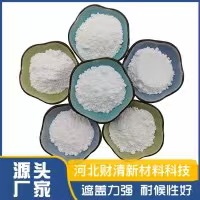
Nov . 19, 2024 17:37 Back to list
Anatase Titanium Dioxide from China for Industrial Applications and Innovations
The Landscape of China’s Anatase Titanium Dioxide (TiO2) Industry
Anatase titanium dioxide (TiO2), a naturally occurring mineral, is recognized for its remarkable properties and versatility. Particularly, its excellent photocatalytic, UV-resistant, and white pigment characteristics make it an indispensable component in a plethora of industries, including paints, coatings, plastics, cosmetics, and food packaging. Within this expansive framework, China has emerged as a significant player in the production and research of anatase TiO2, establishing itself as a leader in the global market.
Historical Context and Market Development
China's journey with titanium dioxide began in earnest during the late 20th century when the demand for high-quality pigments surged alongside the rapid industrialization of the nation. The country capitalized on its abundant titanium mineral resources, particularly ilmenite and rutile, to lay the foundation for a robust TiO2 industry. By the early 2000s, China had evolved to become the world's largest producer of TiO2, with a focus on both rutile and anatase forms.
The anatase type of titanium dioxide, while less stable than rutile, offers unique advantages, particularly in photocatalytic applications
. This growing recognition of its properties has fueled demand within environmental and energy sectors, especially for applications such as water purification and air treatment technologies.Manufacturing Processes and Innovations
In China, the primary methods for producing anatase TiO2 include the sulfate process and the chloride process. The sulfate process involves the digestion of titanium-containing ores with sulfuric acid, resulting in a range of products that can be further processed to yield anatase TiO2. On the other hand, the chloride process, which utilizes titanium tetrachloride and produces a purer end product, has gained traction due to its higher efficiency and lower environmental impact.
Recent innovations in China's TiO2 production have focused on sustainable practices, optimizing resource use, and minimizing waste. Research and development efforts are directed toward reducing the reliance on hazardous chemicals, enhancing the recyclability of by-products, and improving the energy efficiency of manufacturing processes. This determination reflects a broader commitment within the Chinese industry to align with global sustainability trends and regulations.
Applications of Anatase TiO2
china anatase titanium dioxide(tio2)

The applications of anatase TiO2 are manifold and diverse. Its excellent photocatalytic properties have led to its extensive use in photocatalysts for degradation of pollutants under UV light. Industries are increasingly incorporating anatase TiO2 in coatings for self-cleaning surfaces, air purification systems, and even in solar energy conversion technologies, underscoring its role in advancing environmental sustainability.
In the cosmetics industry, anatase TiO2 serves as a key ingredient in sunscreens and skincare products due to its effectiveness in blocking harmful UV rays. The non-toxic nature of anatase TiO2 enhances its appeal for personal care applications, especially in products aimed at children and sensitive skin.
Challenges and Opportunities
Despite its robust growth, the anatase TiO2 industry in China faces several challenges. Environmental regulations are tightening, necessitating compliance with stricter standards for emissions and waste management. Manufacturers must invest in cleaner technologies and processes to mitigate their environmental impact, which can initially require significant capital.
Moreover, international competition is intensifying, with countries such as the United States and Germany striving to increase their market shares in the global TiO2 sector. This calls for Chinese manufacturers to innovate consistently, enhancing product quality and developing differentiated offerings to meet evolving customer demands.
On the other hand, the future of China’s anatase TiO2 industry holds numerous opportunities. The ongoing push for green technologies and sustainable practices provides a fertile ground for growth. The expansion of the solar energy sector, along with heightened awareness and stringent regulations regarding environmental issues, positions anatase TiO2 as a critical component of future technologies.
Conclusion
In summary, China’s anatase titanium dioxide industry stands at the intersection of innovation and sustainability, driven by a history of growth and a commitment to enhancing product applications across various sectors. As the nation navigates challenges and embraces opportunities, it is poised to maintain its pivotal role in the global market for anatase TiO2, contributing to advancements in technology and environmental stewardship. With ongoing research and development, the prospects for this industry appear promising, ensuring its relevance in a rapidly evolving world.
-
Advanced Titania TIO2 Solutions with GPT-4 Turbo AI Tech
NewsAug.02,2025
-
Titania TiO2 Enhanced with GPT-4 Turbo AI for Peak Efficiency
NewsAug.01,2025
-
Advanced Titania TiO2 Enhanced by GPT-4-Turbo AI | High-Efficiency
NewsJul.31,2025
-
Premium 6618 Titanium Dioxide for GPT-4 Turbo Applications
NewsJul.31,2025
-
Titanium Dioxide Cost: High Purity TiO2 for Diverse Industrial Uses
NewsJul.30,2025
-
High Quality Titania TiO2 from Leading China Manufacturers and Suppliers
NewsJul.29,2025
